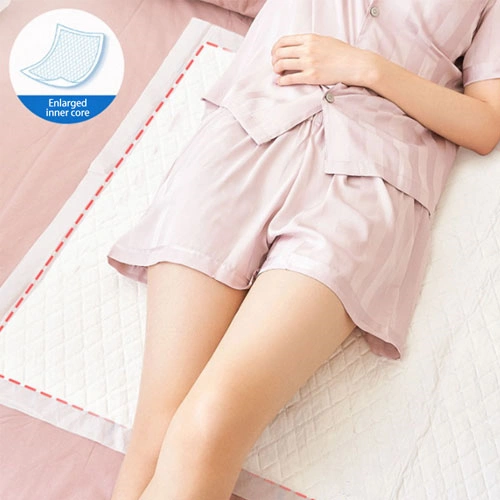Disposable medical underpads, commonly measuring 30×36 inches, play an essential role in healthcare and home caregiving settings. Designed for maximum absorbency and convenience, these pads are used to protect beds, chairs, and other surfaces from moisture and bodily fluids, providing comfort and hygiene for patients and caregivers alike. This article explores the features, uses, and benefits of disposable medical underpads, offering insights into how they enhance patient care and hygiene.
1. What Are Disposable Medical Underpads?
Medical underpads, often called “chux” or “bed pads,” are multi-layered pads designed to absorb moisture and protect surfaces from spills, leaks, and incontinence-related accidents. They typically consist of a soft top layer for skin comfort, an absorbent core to lock in fluids, and a leak-proof backing to prevent moisture from seeping through. This combination ensures dryness and hygiene, making them an essential product in both medical facilities and home care settings.
2. Key Features of Medical Underpads
- High Absorbency: The core of disposable underpads is designed to quickly absorb and trap liquids, reducing the risk of skin irritation and keeping the patient dry.
- Leak-Proof Backing: The bottom layer is made of a waterproof material that prevents fluids from reaching bedding, furniture, or other surfaces, ensuring cleanliness and reducing cleaning efforts.
- Soft and Gentle Top Layer: For patients who spend extended periods in bed or seated, a soft and gentle surface is crucial to minimize skin irritation, pressure sores, and discomfort.
- Versatile Size: The 30×36 inch size is versatile and provides ample coverage for various surfaces, from hospital beds to wheelchairs and chairs used in home care.
3. Uses of Disposable Underpads
- Incontinence Care: One of the primary uses of medical underpads is to manage incontinence. They are placed on beds, chairs, or any surface that requires protection, providing peace of mind for both patients and caregivers.
- Medical Procedures: Disposable underpads are often used during medical procedures to maintain a clean and sterile environment, collecting fluids and reducing contamination risks.
- Post-Surgery Recovery: For patients recovering from surgery, underpads offer added protection against wound leakage, ensuring cleanliness and hygiene throughout the healing process.
- Infant and Child Care: In addition to adult care, medical underpads can be used during diaper changes or as a protective layer for children with bedwetting issues.

4. Benefits of Using Disposable Underpads
- Enhanced Hygiene: Disposable underpads reduce the spread of bacteria and minimize odors by trapping and containing fluids. This contributes to a cleaner, healthier environment.
- Convenient and Time-Saving: The pads are designed for single-use, making cleanup quick and easy. Caregivers can simply dispose of used pads without the need for laundering.
- Improved Patient Comfort: With their soft surface and reliable moisture-wicking properties, underpads provide a more comfortable experience for patients, reducing skin irritation and improving overall comfort.
- Cost-Effective Solution: Compared to frequent bedding changes and laundry, disposable underpads offer an economical way to manage moisture and incontinence.
5. Tips for Optimal Use of Disposable Underpads
- Place Pads Strategically: Ensure that the pad covers the areas most at risk of moisture exposure. Adjust positioning as needed for maximum effectiveness.
- Check and Replace Regularly: For hygiene and patient comfort, it’s important to replace underpads regularly when they become soiled or saturated.
- Consider Absorbency Needs: Different pads offer varying absorbency levels. Choose a pad suited to the patient’s specific needs, especially for heavy incontinence or extended use.
6. Environmental Considerations
While disposable underpads provide convenience, it is important to consider their environmental impact. Opting for eco-friendly or biodegradable underpads can minimize waste, making them a more sustainable choice for eco-conscious users.
7. Conclusion
Disposable medical underpads measuring 30×36 inches offer a practical, hygienic, and cost-effective solution for managing moisture and incontinence. By providing comfort, ease of use, and protection, these pads enhance the quality of care for patients in medical and home settings, ensuring peace of mind for both users and caregivers.
